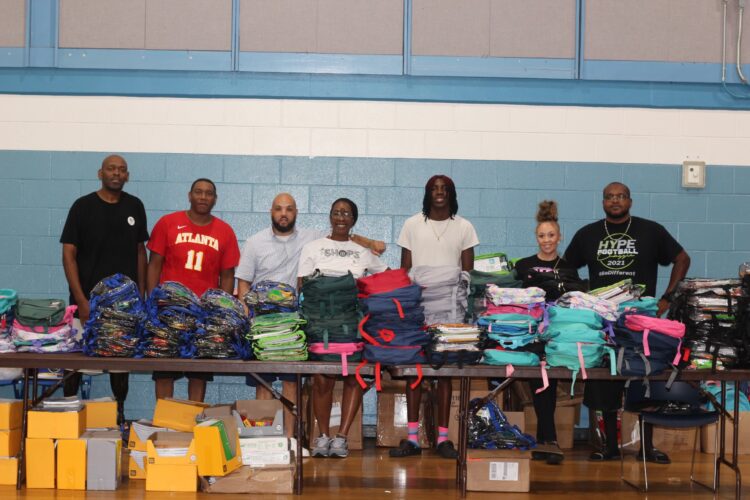As Back-to-School Costs Soar, More Parents & Teachers Turn to Charities for Help
But as the need increases, inflation makes it harder for nonprofits to meet this year's demand.
By Sierra Lyons | August 13, 2023Wealth disparities can be apparent on the first day of school when some students show up with new supplies and clothes while others carry used materials and wear hand-me-downs. For families already struggling to make ends meet, the soaring cost of back-to-school supplies and technology can drain their already limited budgets.
That is especially true this year. A 2023 back-to-school survey from Deloitte reports that after 18 months of inflation, parents of K-12 students aren’t planning to spend as much on back-to-school supplies as they did last year, due to inflation and a need to replenish their savings accounts after the pandemic. A study from World Remit shows that the cost of school supplies in the United States has increased by over 25% compared with 2022.
Though inflation is the lowest it has been since March 2021, high prices are still stressing shoppers and increasing their reliance on local and national back-to-school drives. The nonprofit organizations that sponsor those drives, in turn, are struggling to meet the growing demand.
Volunteers of America’s back-to-school supplies initiative, called Operation Backpack, has been an integral part of their charity for more than 20 years. Twelve participating affiliates around the country provide homeless students with l backpacks filled with essential materials like paper, pencils, notebooks, hand sanitizer and water bottles. They prioritize giving top-of-the-line products directly to children and families, rather than schools or teachers, so students won’t have to show up empty-handed on the first day, making them a possible target of bullying or harassment.
Jatrice Gaiter, vice president of external affairs, said the need is increasing.
“There is a paradox here in that the people that need our services, that number is growing substantially,” Gaiter said. “At the same time, the people and the money that we as nonprofits have to provide them are shrinking, because of inflation. It’s just that everything is so much more expensive this year. And making sure that we have enough for people with multiple children, that’s a big issue. These programs often act like everybody has one child. There are people that have three and five and six kids, and we want to make sure that every single child in a family has a backpack.”
The stress is being felt at the local level as well. HYPE Pensacola, a nonprofit organization that offers athletic and academic afterschool programs, has been hosting back-to-school supply drives for low-income families for years. This month, the organization had its biggest turnout yet, giving out over 500 backpacks filled with supplies like paper, crayons, notebooks and pencil holders. The event also offered free food, haircuts, health vendors educating community members on health crises in the area and two $250 scholarships donated by local restaurants.

“The need always increases, because although the state of Florida has a tax-free weekend, which this year had been extended to a month long, on the flip side of that, the cost of living is rising, employers aren’t giving raises,” Shaun Hartsfield, founder and president of HYPE Pensacola said.
Hartsfield said the record-breaking event couldn’t have succeeded without help from other local organizations.
“People’s wages at their job isn’t going up, but the cost of living is going up, so although there’s tax-free, parents still can’t afford them,” he said. “Everybody has to have electricity, so that’s always going to be their priority. With just the cost of living being high, there’s always going to be an increase every year in people needing the assistance that we provide.”
Back-to-school shopping also drains many teachers’ wallets as they use their own money to buy classroom supplies. On average, public school teachers spend nearly $500 without being reimbursed, according to data from the National Center for Education Statistics.
The Kids in Need Foundation is a nonprofit organization that supports teachers and students in Title I schools where at least half the students are enrolled in the National School Lunch Program. In 2022, the foundation gave more than $143 million in free school supplies and classroom resources. But like Gaiter, Michaela Becker, the foundation’s senior director of national network, said inflation is making it harder to help those in need. The organization relies heavily on grants and funding, so when families and foundations have less to donate, the foundation has less to give.
“Costs have gone up for everyone,” Becker said, including for suppliers that contribute to the foundation. Bic, one of its top donors, has seen a rise in the cost to manufacture its products, leaving them with fewer pens to give away.
One of the organization’s biggest initiatives is the Teacher Resource Center in Roseville, Minnesota, where educators can fill up carts with classroom supplies for free. There is also a Supply a Student program, where $25 donations equate to one backpack full of necessities, and a Supply a Teacher program, where teachers receive two boxes of supplies — enough to last a class of 24 students for a semester.
Becker said organizations like theirs are crucial in times of inflation, but the need never stops.
Get stories like these delivered straight to your inbox. Sign up for The 74 Newsletter

